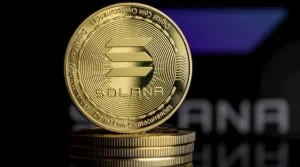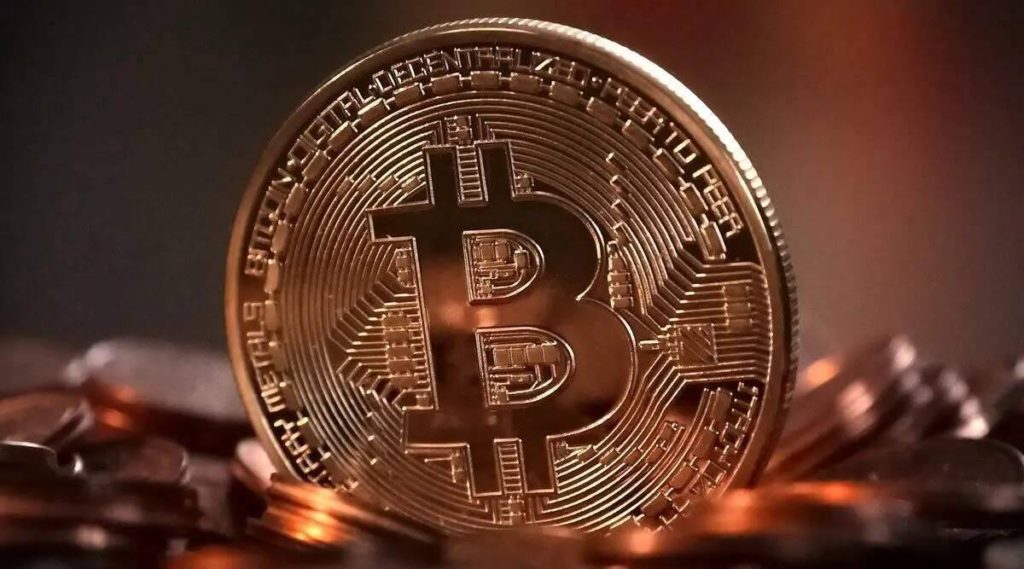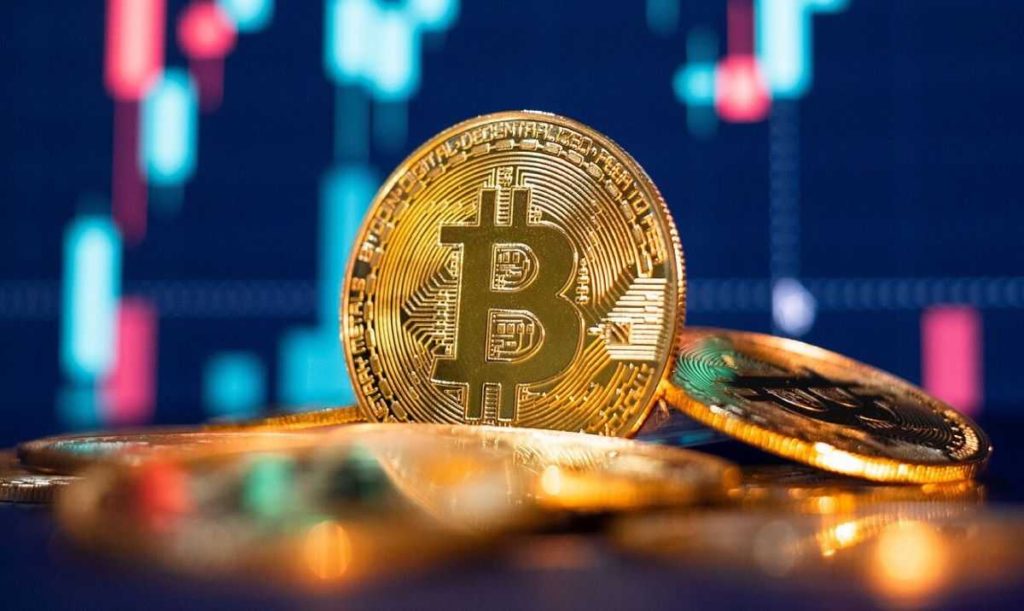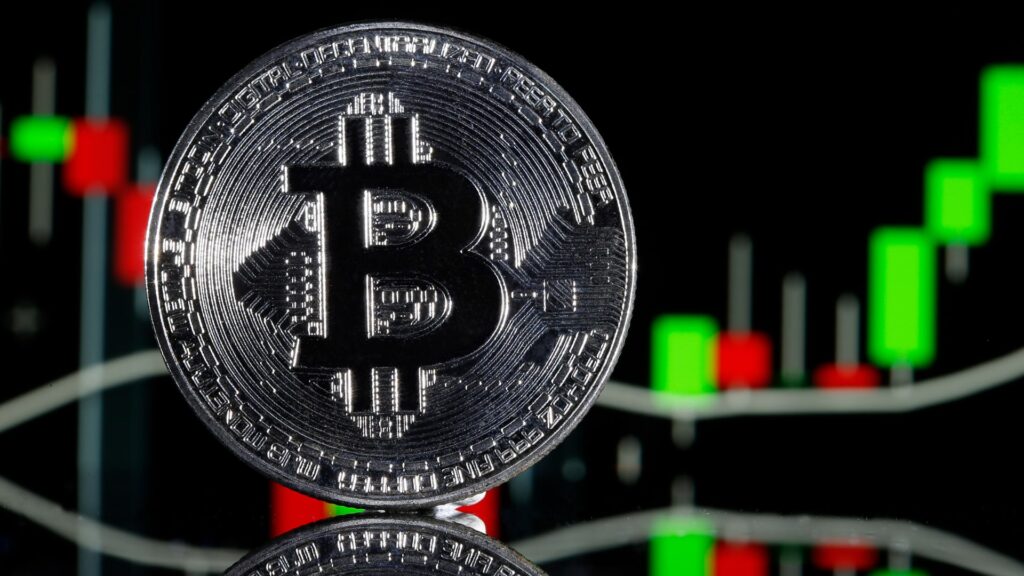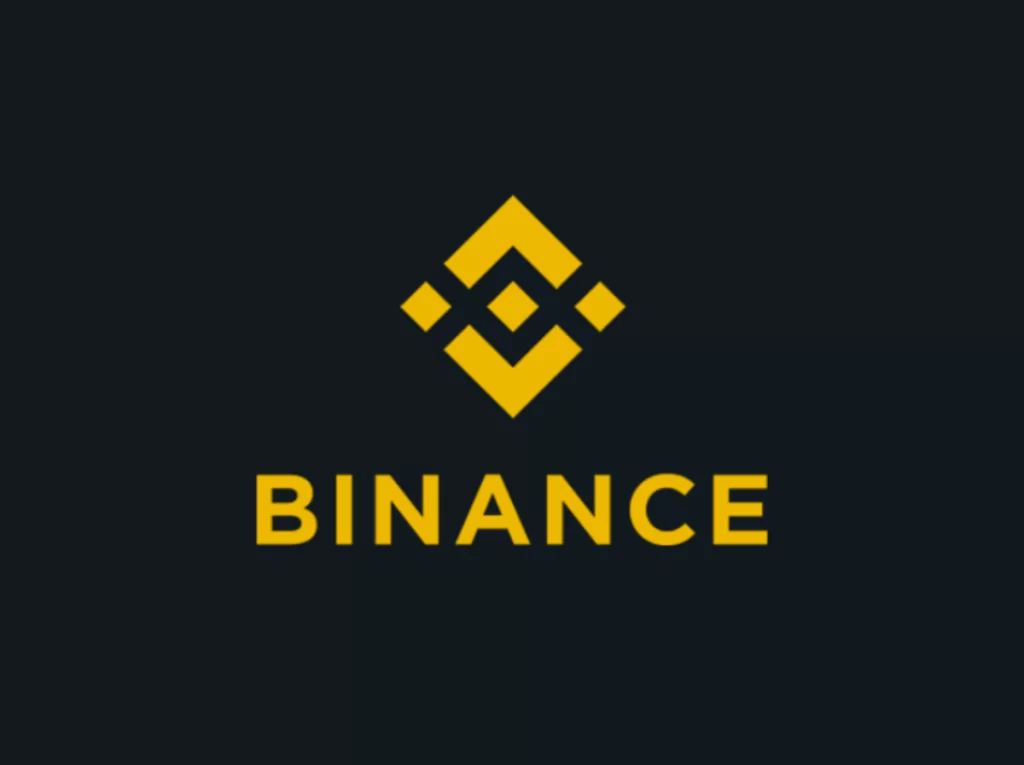Bitcoin rebounded toward $106,000 on June 3 following a turbulent start to the trading day.
After briefly slipping below its previous all-time highs from late 2024, the cryptocurrency managed to steady itself, resisting a feared test of the $100,000 support level.
Market watchers noted an emerging bullish sentiment, fueled by renewed interest in key liquidity zones.
Data from Cointelegraph Markets Pro and TradingView highlighted the recovery of BTC/USD, showing the pair reversing its earlier drop after the Wall Street open.
Traders Eye High-Stakes Liquidity Zones
Popular trader Daan Crypto Trades suggested that both bulls and bears had positions clustered around the current price range, hinting at the potential for volatile moves.
“There are still a lot of positions built up on both sides,” he stated on X.
“Major liquidity zones above $110K and below $103K.”
This tension between upward and downward liquidity could trigger sudden price swings, with analysts watching closely for a breakout.
CoinGlass data showed that upside liquidity was already within range, raising the possibility of a short-term rally designed to flush out positions.
Support Builds, but Momentum Still Lacking
Material Indicators, a trading analytics platform, pointed out key areas of support that could come into play if prices dip again.
“FireCharts shows ~$263M in BTC bid liquidity laddered down to $97,750, and an additional block of plunge protection just above the Yearly Open,” the firm stated.
This strong bid interest may serve to buffer Bitcoin against further declines and keep the broader uptrend intact.
Still, Material Indicators remained cautious about expectations for new all-time highs in the near term.
“The trend undoubtedly is still up, but there has been no strong continuation above $100K+ this year just yet,” Daan Crypto Trades remarked the day before.
Profit-Taking Begins but Euphoria Still Absent
According to on-chain analytics firm Glassnode, Bitcoin holders have started realizing profits, though not at the scale seen during past bull market peaks.
“The recent Bitcoin ATH breakout has led to a notable uptick in profits locked in, with the average coin capturing a +16% profit,” the firm said in its latest edition of “The Week Onchain.”
Only 8% of all trading days have yielded higher profits for investors, signaling that a wave of profit-taking may be underway.
Glassnode also emphasized that the market hasn’t yet entered a “euphoric” phase typically associated with cycle tops.
Instead, traders appear cautiously optimistic, with many still waiting for a strong catalyst to push Bitcoin decisively past the $110,000 mark.
Norwegian Block Exchange (NBX) saw its stock price skyrocket more than 138% in a single trading session after announcing it had purchased Bitcoin and planned to acquire more.
The move reflects a growing trend among Nordic companies to incorporate Bitcoin into their treasury strategies.
Initial Purchase and Future Plans
On June 2, NBX confirmed the acquisition of 6 Bitcoin, valued at approximately $633,700.
The firm aims to increase its holdings to 10 BTC before the end of June.
The company is also in talks to raise additional capital to expand its Bitcoin position.
By the close of June 2’s trading day, NBX shares had surged by 138.5%, ending at 0.033 euros ($0.038), according to Google Finance.
Despite this jump, the stock remains far below its all-time high of 0.93 euros ($1.06), which it reached in January 2022.
Bitcoin as Collateral and Operational Tool
NBX plans to use its newly acquired Bitcoin to support the issuance of USDM, a stablecoin on the Cardano blockchain.
The Bitcoin will also generate yield within the Cardano ecosystem.
The platform stated, “Bitcoin is becoming an important part of the global financial infrastructure.”
NBX believes the holdings will enhance “operational efficiency” and attract capital from crypto-curious businesses.
The company also revealed ambitions to explore Bitcoin-backed loans as part of a broader effort to evolve into a digital asset bank.
Growing Bitcoin Adoption in Norway
NBX is not alone in embracing Bitcoin.
Norwegian industrial giant Aker ASA entered the space in 2021 by creating a crypto-focused subsidiary, Seetee, which now holds 1,170 BTC.
According to Bitcointreasuries.net, Aker bought its Bitcoin at an average cost of $50,200, with current holdings valued at approximately $123 million.
Another Norwegian brokerage, K33, has raised 60 million Swedish krona ($6.2 million) to begin purchasing Bitcoin, signaling wider interest among regional firms.
Even Norway’s central wealth fund is indirectly exposed—Norges Bank held 3,821 BTC via equity investments by the end of 2024.
Global Trend of Corporate Bitcoin Treasuries
NBX’s stock rally mirrors other cases where firms gained after announcing Bitcoin investments.
France’s Blockchain Group revealed its Bitcoin buy in November 2023 and saw its stock rise 225% to 0.48 euros.
In Indonesia, DigiAsia Corp announced a $100 million Bitcoin investment plan, prompting a 91% increase in its stock price.
Collectively, corporate Bitcoin treasuries now hold over 3 million BTC, valued at more than $342 billion, according to Bitbo.
Bitcoin attempted to stabilize above $105,000 on June 1 following a strong monthly performance that saw an 11% gain for May.
The cryptocurrency faced ongoing pressure throughout the week, bringing it back to key support levels established earlier in the 2024 bull market.
Among these was the December 17 local high of roughly $104,450, which traders watched closely heading into the new week.
Analyst Matthew Hyland labeled the weekly close as “pivotal” for the short-term trend.
Hyland pointed to a developing bearish divergence between Bitcoin’s price and its relative strength index (RSI) on the weekly chart.
RSI, which gauges momentum, appeared to weaken even as price attempted to climb—raising caution flags for traders.
Bearish Divergence Raises Concerns
Trader Titan of Crypto echoed those concerns, warning his followers that a potential RSI bearish divergence was forming.
“Still unconfirmed but worth watching,” he posted on May 31, alongside a chart referencing Fibonacci-based fair value gaps (FVGs).
These gaps often indicate price areas where trading activity was unbalanced, and two key FVG zones were highlighted at $97,000 and $90,000.
Titan added, “After a +50% run, a cooldown wouldn’t be a bad thing. Healthy market structure matters.”
$100K Level Could Act as Magnet
CrypNuevo, another trader analyzing order book data, suggested that $100,000 could serve as a price magnet if selling pressure continues.
“It’s a strong psychological level and liquidity tends to stack in these levels,” they noted, anticipating a possible retest.
Despite Bitcoin’s 8% decline over the past week, CrypNuevo remained bullish on the broader trend.
“So I think we’ll probably drop to $100k and play around there for some days… even a slight temporary drop below it to shake the market would make sense,” they predicted.
They concluded that overall market structure remains bullish, with the bull market support level near $84,000 closing in from below.
Bitcoin has pulled back sharply, sparking renewed caution from analysts who warn that the digital asset may be headed for a deeper correction before resuming its bullish trajectory.
BTC/USD fell by 8% as of May 31, retreating to levels below its previous all-time high.
This decline leaves the token nearly $9,000 below its recent record peak, putting short-term sentiment to the test.
Demand Metrics Signal a Cooling Trend
A report from CryptoQuant shared with Cointelegraph suggests that Bitcoin’s demand growth may be hitting a temporary ceiling.
The analytics platform estimates that Bitcoin demand has increased by 229,000 BTC in the last 30 days, nearing the 279,000 BTC peak seen in December 2024.
“Some of Bitcoin’s demand metrics may be reaching a short-term top, which could imply a pause in the current rally,” the report stated.
It also noted that whale balances have risen by 2.8% over the past month, a pattern often followed by reduced accumulation from major holders.
Additionally, average unrealized profits hovered around 30% when prices neared $111,000—another sign of an imminent slowdown.
Analysts Eye Key Technical Levels
Prominent trader Mags highlighted the importance of the upcoming weekly candle close.
“On the daily chart, BTC has broken below the previous all-time high and is facing rejection at that same level,” Mags observed.
“This might look like the start of a deeper correction.”
If Bitcoin closes the week below the December 2024 high of $104,450, it may form a bearish pattern before climbing again, he added.
Bull Market Outlook Remains Intact for Now
Despite the current retreat, broader sentiment remains optimistic.
Trader Aksel Kibar said the bull market structure is still intact, provided prices remain above $73,700.
He reiterated his 2025 target of $137,000 for BTC, aligning with a midterm bullish outlook.
CryptoQuant analysts see $120,000 as a key level where many investors might choose to lock in profits.
While the path forward could involve further short-term losses, most analysts agree the bull market has not been derailed.
Large Bitcoin holders have spent the week adding to their stacks even as spot prices hover just below April’s all-time peak.
On-chain dashboards from Material Indicators reveal a steady uptick in buy orders sized over $1 million, a pattern analysts read as “whales locking in exposure before the next leg.”
At the same time, BTC has traded in a narrow $5,000 channel around $105,000, suggesting a bout of consolidation rather than capitulation.
“BTC is consolidating above $100k and whales are accumulating,” noted Material Indicators co-founder Keith Alan, pointing to a heat-map of rising bid liquidity clustered at six-figure levels.
Analysts flag $94K as first major support
Alan’s models place the 21-week moving average—currently near $94,000—as the most likely bounce zone should sellers gain the upper hand.
“If a correction comes, I expect support to hold at the trend line which currently has confluence with the 21-Week Moving Average.”
That view aligns with historical patterns: previous bull-market pauses have typically retraced to the 21-week curve before resuming their advance.
Bull market context tempers correction fears
Despite the possibility of a pullback, market structure remains decisively bullish.
Bitcoin has printed seven consecutive green weekly candles, a streak rarely seen outside primary uptrends.
Funding rates on perpetual futures have cooled, implying less overheated leverage and healthier foundations for another breakout attempt.
High-profile trades stir social-media drama
Hyperliquid trader James Wynn has amplified volatility by live-tweeting every blockbuster position.
“They FORCED the $BTC price DOWN to $108,700,” he wrote after claiming rivals attempted to liquidate a 40x long.
Blockchain monitors show Wynn’s latest leveraged bet sitting on an unrealized $3.4 million loss, a reminder that whale theatrics can swing intraday sentiment.
Macro signals still favor upside
The dollar index slipped this week, and gold’s rally lost steam, pushing some macro funds to rotate back into digital assets.
Spot Bitcoin ETFs recorded their strongest three-day inflow since early May, according to BitTrends data.
Meanwhile, Glassnode metrics show dormant supply at a record high, indicating long-term holders remain reluctant to sell into strength.
Risk factors traders are tracking
CME futures now price a 45 % chance of a Federal Reserve rate cut in September, and any hawkish surprise could drain risk-asset appetite.
Regulatory headlines also lurk: the Securities and Exchange Commission has yet to publish final guidance on crypto staking, and a restrictive ruling could sap retail momentum.
Even so, the broader market mood leans optimistic, with several analysts setting year-end targets between $135,000 and $155,000—levels that imply a fresh wave of FOMO if $112,000 resistance breaks.
Outlook
For now, eyes remain on whether whales keep stepping in on minor dips and whether the 21-week average indeed acts as a floor.
A clean bounce near $94,000 would fit the script of a classic mid-cycle correction inside a powerful bull trend.
Conversely, a decisive close below that line could open the door to a deeper retracement toward the $80,000 handle.
As ever in crypto, sentiment can flip quickly, but whale behavior continues to suggest the path of least resistance points higher—after a potential shakeout to test conviction.
Bitcoin’s blistering rally to record highs paused just shy of the $110,000 milestone on May 26, yet institutional demand continued to swell in the background, cushioning any immediate downside pressure.
The flagship cryptocurrency dipped after momentum faded during Asia-Pacific trading, lingering near $108,500 as traders weighed looming United States inflation data and the imminent earnings release from chipmaker Nvidia.
Market watchers attributed the hesitation in part to President Donald Trump’s decision to delay retaliatory European Union tariffs until July 9, a move that eased equity jitters but left macro uncertainty hanging over risk assets.
Even so, derivatives desks reported a steady uptick in the Bitcoin two-month futures premium, which climbed from 6.5% to 8% in twenty-four hours, signaling that sophisticated traders were confidently rebuilding long exposure rather than capitulating.
Institutional appetite offsets price lull
Evidence of that confidence was nowhere clearer than in spot Bitcoin exchange-traded funds, which attracted $2.75 billion of net inflows between May 19 and May 25, according to preliminary custodial data.
Wall Street giants appear increasingly comfortable marketing those vehicles to core clients; JPMorgan chief executive Jamie Dimon told investors the bank would “finally allow clients” to purchase the products, creating a new pathway for its $6 trillion deposit base to gain indirect crypto exposure.
MicroStrategy founder Michael Saylor underlined the theme by revealing a fresh $427 million Bitcoin acquisition at an average price of $106,237, lifting the business-intelligence firm’s holdings to more than 239,000 BTC.
Options data delivered a complementary bullish signal: the 30-day put-call delta skew turned negative 6%, implying traders were paying a premium for upside hedges while pricing limited probability of a violent sell-off.
Macro cross-currents in focus
For now, analysts caution that headline economic releases could dictate the next directional break.
The Richmond Fed manufacturing index is due on May 28, followed two days later by the Fed’s preferred inflation gauge, the PCE price index, and a hotter-than-forecast print could rekindle concerns about higher-for-longer interest rates.
Nvidia’s earnings, expected after the closing bell on May 28, represent another wildcard; a disappointing read-through on artificial-intelligence hardware demand could sap risk appetite across equities and spill into crypto.
Nevertheless, bulls argue that Bitcoin’s structural bid, driven by ETFs and treasury strategies, should limit any retracement toward $105,000, the level that marked last week’s low.
Path to new highs
Bitcoin remains just 2.6% below its all-time high of $111,957, and several desks believe a decisive break above $112,000 could trigger systematic short covering and ignite a fresh leg toward the psychologically potent $120,000 handle.
Skeptics counter that rising U.S. government debt worries and a softer housing market, highlighted by a 5.1% weekly drop in mortgage applications, might cap enthusiasm until clearer evidence emerges that the economy can navigate tight monetary conditions.
With U.S. markets closed for the Memorial Day holiday, liquidity is expected to thin, raising the likelihood of abrupt moves driven by a handful of large orders on offshore exchanges.
Until then, traders are parsing every macro headline while keeping one eye on the persistent wall of institutional money waiting for dips—money that, so far, has proven more than willing to “gobble up” available supply.
Polymarket’s on-chain prediction markets are buzzing, with daily matched volume near $40 million. That depth lets traders price big questions—from playoff champions and crypto milestones to interest-rate pivots—on a single transparent ledger. Thanks to 24-hour trading, instant settlement, and visible order books, the edge goes to participants who treat the platform like a real exchange rather than a casual punt. Below are five markets that combine high volume with clear catalysts, plus tactics to navigate them effectively.
Stanley Cup Champion 2025
The largest pool on the site is “Stanley Cup Champion 2025,” where contracts for the remaining teams hold nearly $300 million. Florida trades around forty-five percent implied odds, Dallas just under thirty, and Edmonton, Carolina and a cluster of long shots round out the ledger. Because the market resolves on 23 June 2025, every playoff game can shove prices by double digits.
Bettors often overreact when a home side wins Game 1; historical data show the road team still claims the series roughly one time in three. Contrarian traders can exploit that knee-jerk move by buying the dip on the loser right after the opener. If you prefer lower variance, post resting bids a few cents below the market before puck drop and clip spreads during intermission, when liquidity tightens.
Where Will Bitcoin Finish 2025?
Polymarket hosts a ladder of binaries on Bitcoin’s closing price at year-end. The busiest strike—$120 000—changes hands near eighty percent, with cheaper convexity at $90 000 and $100 000. These cash-settled options behave like digital calls without funding costs.
A common play is to buy a far-out YES while selling a nearer NO, limiting downside yet keeping a fat tail of upside. Because the ladder spans many levels, you can reshape the implied probability curve: go long tiers you deem cheap and short those you consider rich until the distribution mirrors your forecast. Active traders also scalp around major options-expiry dates, when miners and funds rebalance positions and push individual strikes out of line.
How Many Fed Rate Cuts in 2025?
Macro traders follow the multi-outcome contract covering Federal Reserve moves. “Two cuts” sits near twenty-five percent, “zero cuts” a shade higher, and tail outcomes rest in single digits. A linked binary on the 18 June FOMC meeting assigns minimal odds to an immediate cut, but prices lurch on every CPI or payroll print.
Discrepancies of two or three points often arise between this market, CME Fed-funds futures and Kalshi rate contracts. Buy the cheaper side, sell the richer, and lock in a low-risk spread—just study each platform’s settlement clock before sizing up. Data releases usually move Polymarket first and futures second, giving nimble traders a short arbitrage window.
Will the United States Enter Recession in 2025?
The recession binary spiked above sixty-five percent during a March tariff scare but now sits near forty. Because resolution hinges on the National Bureau of Economic Research’s call, odds can drift for months, giving patient traders room to fade sentiment extremes.
One hedge pairs a YES here with a NO on aggressive rate-cut outcomes. Growth might slow enough to sting equities yet still miss the technical recession bar, in which case the rate leg pays. Adding “S&P 500 down ten percent in 2025?” captures drawdowns outside the official label.
Which Company Will Have the Best AI Model?
A smaller but lively contract tracks which firm tops the Chatbot Arena leaderboard on 31 December 2025. Google holds about forty percent, OpenAI a quarter, with Anthropic, Meta and the rest splitting the remainder. Benchmark leaks can shove prices ten cents in minutes, rewarding traders who set alerts and react quickly.
Market makers quote both sides a cent inside the spread, collect fees and keep exposure minimal. When real news hits, widen one side of the book to ride momentum. No scheduled catalyst exists until year-end, so patience—and a good fee tier—pays dividends.
Practical Polymarket Tips
Start with liquidity. Stick to markets whose spreads stay below two cents.
Use limit orders. Market orders bleed slippage and gas.
Mind the overround. If summed YES prices exceed one-hundred-ten percent, tighten quotes or wait.
Understand settlement. Read each market’s resolution source to avoid surprises.
Arbitrage timeframes. Daily, monthly and yearly variants often desynchronize after news.
Watch the fee rebates. High-volume accounts earn rebates that turn a break-even edge into profit.
Batch exits. Withdraw only after several positions settle to save fees.
Keep records. Screenshots and a spreadsheet beat guesswork.
Respect bankroll rules. Size trades so a single shock cannot sink you.
Pick markets with tangible catalysts, set alerts for every data drop, and let probability—not emotion—guide each decision. Follow these guidelines and Polymarket can evolve from novelty punt to disciplined edge in an increasingly efficient market.
ARK Invest chief executive Cathie Wood believes exchange-traded funds will remain a mainstay for mainstream investors, no matter how quickly self-custody wallets gain traction.
“I think ETFs are an important stepping stone because, you know, wallets seem so complicated, so much friction for consumers, they just wanna push a button,” she told ETF analyst Eric Balchunas at the Solana Accelerate conference in New York on May 23.
“So ETFs for those who want the convenience, I don’t think, will lose a lot of their luster.”
Wallets still offer vital protection, Wood argues
While praising the ease of a ticker-based purchase, Wood stressed that personal wallets provide an extra buffer against failures in traditional finance.
“These are insurance policies against something going wrong in the traditional world,” she said.
Bitbo estimates roughly 200 million active Bitcoin wallets exist worldwide, a number Wood expects to grow as onboarding improves.
ETF inflows keep mounting after record-setting price action
The week ending May 23 saw about $2.75 billion flow into U-S spot Bitcoin ETFs, coinciding with BTC’s new peak above $111,900.
Since their January 2024 debut, the products have attracted roughly $44.5 billion, according to Farside Investors.
Spot Ether ETFs, launched in July 2024, have accumulated about $2.77 billion despite the S E C’s refusal to permit staking rewards.
Wood called that restriction a key reason Ether funds were “less successful than people were expecting.”
Ether still the gateway to smart-contract ecosystems
Even so, the ARK Invest founder views Ether as the logical first step for investors exploring smart-contract platforms.
“So they might start in the smart contract world with Ether, but once they study the technology, and follow the developers, and see the uptake by consumers, I think they will get there,” she said, referring to interest in alternatives such as Solana.
Wood acknowledged that President Donald Trump’s January launch of the “Official Trump” memecoin on Solana may have unnerved some institutions.
“I think they might be a little turned off by what happened with the Trump memecoin,” she conceded, noting the token’s 50 percent plunge days after release.
Long-term targets and the road ahead
ARK in April raised its “bull case” Bitcoin price target to $2.4 million by 2030, citing growing institutional demand and BTC’s status as “digital gold.”
Wood said she is still finalizing a comparable forecast for Solana.
For now, her message is clear: convenience products such as ETFs will coexist with, not replace, self-custody solutions as the crypto market matures.
Bitcoin faces its largest monthly options expiry on May 30, with open interest totalling $13.8 billion.
Bulls hope to keep spot above $110,000 to capitalize on $4.8 billion in in-the-money call options.
Put sellers were caught off guard by BTC’s 25% rally over the past month, leaving 95% of bearish strikes below $109,000.
Futures Positioning
Despite a hefty $79 billion in futures open interest, bears risk a short squeeze if prices grind higher.
Efforts to nudge BTC below $105,000 would reduce bulls’ theoretical profit, but strong ETF inflows limit downside momentum.
Scenario Analysis
Derivatives platform Laevitas estimates that a $107k–$110k settlement would hand call buyers roughly $3.35 billion in edge.
A close north of $110k could expand that advantage to $4.7 billion, potentially fuelling an immediate push to fresh highs.
Macro Wildcard
Tariff rhetoric remains the joker in the deck.
Analysts warn that renewed trade tensions could revive risk aversion and sap crypto liquidity, just as they did during the May 23 flash drop.
Binance secured a significant, though partial, courtroom victory this week when Britain’s Court of Appeal struck out the bulk of a £8.9 billion lawsuit tied to the delisting of Bitcoin SV in 2019.
The judgment narrowed an investor claim that exchanges conspired to choke the token’s growth by removing trading pairs, effectively slashing potential damages from $11.9 billion to a fraction of that sum.
Court rejects speculative losses
In a written opinion, judges dismissed the so-called “foregone growth effect,” explaining that “BSV was obviously not a unique cryptocurrency without reasonably similar substitutes.”
Plaintiffs had argued Bitcoin SV might have ascended into the digital-asset elite had liquidity remained intact, a scenario the court deemed too hypothetical for restitution.
Mitigation duty emphasized
Master of the Rolls Sir Geoffrey Vos wrote, “They had a duty to mitigate their losses,” adding, “They cannot recover losses that they could reasonably have mitigated.”
The panel found that investors could have sold holdings or rotated into other coins, undercutting claims for windfall damages.
‘Loss of a chance’ theory fails
Lawyers for the class tried to revive a “loss of a chance” doctrine, asserting that delisting deprived holders of future price gains.
The court labeled the argument “flawed as a matter of principle,” stressing that “cryptocurrencies are, by their nature, volatile investments.”
Implications for broader litigation
The ruling may influence parallel suits targeting exchange decisions on token listings, reinforcing the idea that damages must be anchored to measurable economic harm.
Binance, still facing limited residual claims from investors unaware of the delisting, welcomed the outcome as validation of its strike-out strategy.
Separate FTX battle
The exchange is also seeking to dismiss a $1.76 billion action brought by the FTX estate, insisting that mismanagement, not external manipulation, doomed the rival platform.
With regulatory scrutiny intensifying worldwide, the U.K. decision offers Binance a precedent to cite in future cases involving allegations of market interference.
For Bitcoin SV proponents, however, the latest setback highlights the uphill task of proving that missed market opportunities translate into legally recoverable damages.
The case now proceeds with a sharply reduced scope, leaving remaining plaintiffs to quantify losses tied directly to the delisting date rather than imagined bull runs.
Legal analysts say the judgment underscores the courts’ reluctance to back-stop speculative bets in an asset class famous for double-digit swings.
Exchanges, they add, are likely to view the decision as affirmation that listing choices, while consequential, do not guarantee price trajectories.
For investors navigating an ever-changing roster of tradable coins, the message is clear: diversification and timely risk management remain paramount.
As digital-asset litigation matures, courts appear increasingly unwilling to entertain what one lawyer called “counterfactual moonshots” dressed up as damage claims.
Binance’s limited victory may not end its legal headaches, but it sharply limits exposure on one of the more ambitious suits filed against a crypto exchange.
The precedent could ripple through the sector, curbing similar claims and nudging market participants toward clearer contractual terms on token availability.
For now, Bitcoin SV must seek relevance in the marketplace, not the courtroom.


